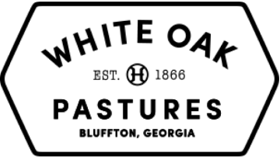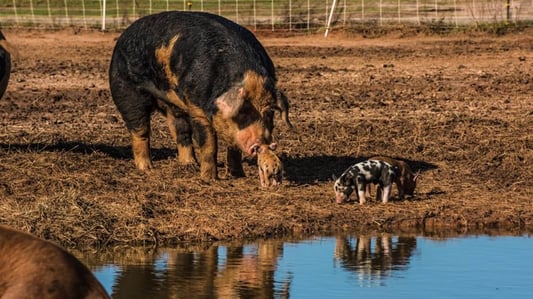Under a new rule, "the Trump administration will allow pork plants to reduce the number of Department of Agriculture line inspectors assigned to them and run their slaughter lines without any speed limit".
Brian Sapp, White Oak Pastures' Director of Operations, compares it to "the fox running the hen house". With this "modernization", large plants can push the limits on speed and capacity while also remaining the ones determining the safety of the product.
Faster rates of slaughter endanger animal welfare and public health
Currently, large processing plants slaughter upwards of 1,100 pigs per hour. Brian believes that this "modernization" rule could increase that number by 30-40%.
"At these current speeds and future speeds, facilities start thinking in groups or loads," says Brian, "and the welfare of the individual animal is greatly reduced".
To prioritize slaughtering 1,100-1,500 animals per hour, large plants avoid "stopping the line" when there is an issue with an individual animal. With the new USDA rule, factory workers, rather than USDA inspectors, can be responsible for flagging signs of disease or contamination.
Amid consumer concerns about independence and transparency in the slaughter process, why the new change?
"It's focused on saving money for the USDA and the plants," explains Brian. "Reducing the number of inspectors 'on-line' saves the government millions of dollars, while the increase in line speeds saves the plants millions of dollars per year".
White Oak Pastures prioritizes a humane rate of slaughter
At White Oak Pastures, we are fiercely committed to the welfare of each individual animal at every stage of its life. That's why we are one of the only farms in the United States to invest in on-farm red meat and poultry abattoirs.
In the past, White Oak Pastures has used a couple small processing facilities for our hogs. By the end of October 2019, we will be moving to slaughter 40 pigs a day on our farm.
Our plants are not efficient - they are humane. "If something goes wrong, every employee in the facility has the obligation to stop the process," says Brian. "Stopping the line" allows our employees to fix any issues before they manifest into animal welfare, employee safety, or food safety issues.
White Oak Pasture rate of slaughter vs large conventional slaughterhouse:
- WOP: 30-35 head of cattle per day
- Conventional Plant: 6,000 cattle per day
- WOP: 3,000 chickens per week
- Conventional Plant: 200,000 chickens per day
- WOP: 40 pigs per day (projected)
- Conventional Plant: 1,100-1,500 pigs per hour
Our priorities are animal welfare, public safety, and employee health - not speed or profit.
Our zero-waste abattoirs operate completely differently than high-speed, high-volume, conventional slaughterhouses. By moving our hog processing "in-house", we continue to prioritize the welfare of our animals at every stage of their lives.
Amidst changing rules and oversight, we believe that our rates of slaughter reflect our commitment to animal welfare, employee health, and the safety of our products.




